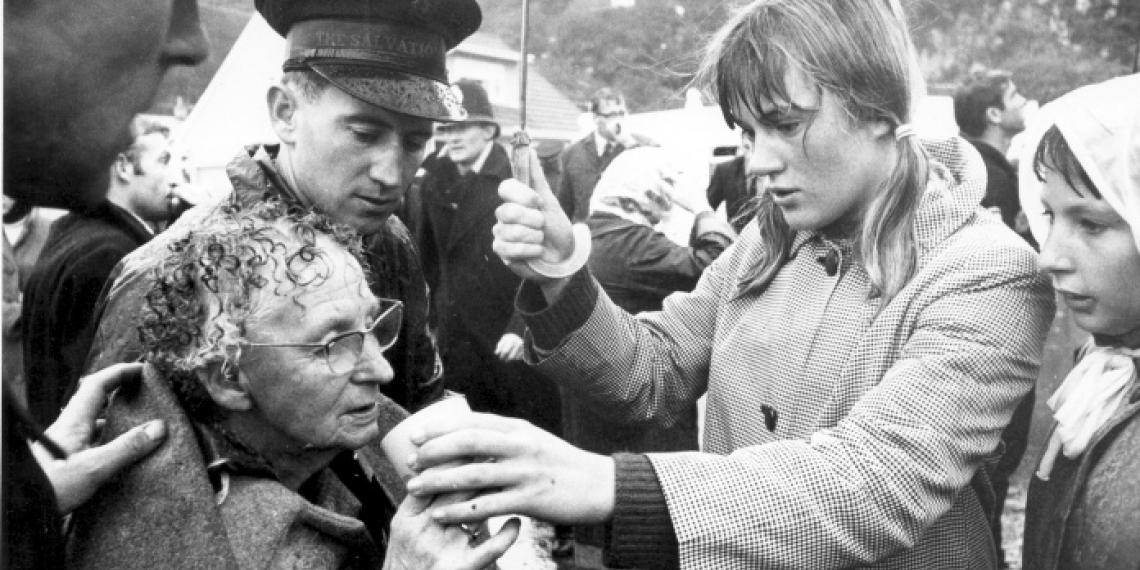You are here
Wahine Disaster

On 10 April 1968 a dreadful storm began beating its fury on Wellington. Schools, work places and factories closed because of extreme weather and damage being done everywhere. Then the news came—the Wahine was on the rocks at Barrett’s Reef, just off Seatoun.
At 1pm news came that the ship was listing badly and people were abandoning ship. Many made the safer landing onto Seatoun beach where rescuers were in attendance, but many were being carried by freak tides across the Harbour to the Pencarrow rocks on the Eastbourne coastline.
A Salvation Army officer filled urns, took tea and paper cups and headed for Eastbourne. There he walked around the rugged coast line to where huge waves had thrown passengers against the rocks.
The scene suddenly changed as they were confronted with a terrible scene—badly injured people, torrential rain and battering waves. A bulldozer and front-end loader cleared the track, but as fast as they worked the sea threw more rubble across the track. As the jeep took the last of the survivors, the rescue workers walked. This revealed the true picture as they walked back through the many bodies washed ashore. Survivors were taken to the Wellington Central Railway station.
The Hutt hospital immediately put two wards at the disposal of rescuers and staff were recalled. Survivors with grave injuries were rushed straight into surgery and others were given sedatives so that doctors could cope with the worst cases first. The cries and groans of shocked survivors came out of induced sleep. Salvation Army cadets arrived and went bed to bed listening to their stories and comforting them.
Doctors decided to ready as many people as possible to be picked up by relatives. This was not an easy task, no one had any clothes! The force of waves and rocks had torn clothes off most people. Those who arrived with clothing were dressed in hospital gowns—their clothing was too damaged to keep.
The Salvation Army approached Hannah’s Shoe Store and acquired large sized soft slippers for the swollen and cut feet of the survivors; men and women’s outfitters supplied underwear; and a Salvation Army Thrift Shop supplied warm clothing. People were washed and dressed and reunited with their relatives.
Tuesday following the disaster, the unused slippers and underwear were returned and a bill was requested—but no bill was given. Both shops were glad to be part of the rescue mission.
Major David Bennett (see photo), was a young officer at the time. He remembers the trauma and relief of the passengers, and the feeling of helplessness they felt. They could see the ship so close and yet it was unreachable.
Fourteen years later another Salvation Army officer, in uniform, met a lady serving in a store. The woman asked if she knew an officer who’d helped in the disaster—she wanted to thank him but didn’t know how to get hold of him. It turned out to be the officer’s husband and she promised to take the thanks home to him.